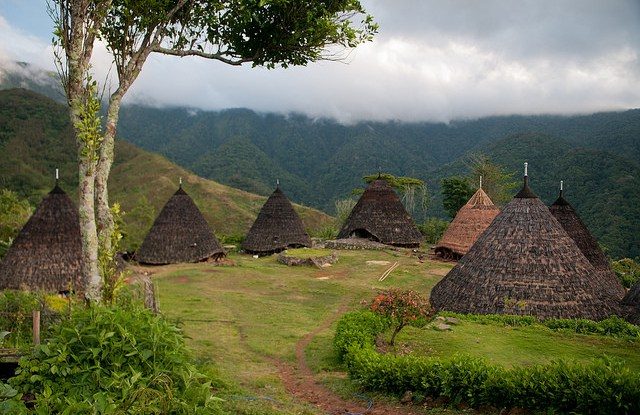
In just over a month, the second Global Landscapes Forum will kick off in Lima, Peru. The past year has seen a surge of interest and engagement in taking a landscape perspective to key development challenges – new research, partnerships, numerous blogs, seminars, panels and conferences, innovative work on finance, and recent policy initiatives that align well with the landscape thinking like the GCF Rio Branco Declaration and the Alliance on Climate-Smart Agriculture.
In short – landscapes are receiving a lot of attention.
There appears to exist a broad consensus that it is a good idea to work across sectorial boundaries and find combined solutions in landscapes. The widespread assumption is that we would have a better chance of meeting some critical challenges of our time—food security, poverty, climate change, safe water supplies, biodiversity conservation—by working together on the ground.
This is a good starting point. But there is a risk that we continue to talk about landscapes without achieving real-world impact. With some urgency, we need to demonstrate how the landscape approach can make a difference, and how it can be scaled up to meet our expectations. I would like to see the Forum in Lima focus on how we can put the landscape approach to work, and I look forward to learning from many experiences.
One of the hurdles appears to be that the “landscape approach” itself is muddled. That is, over a relatively long period—at least several decades—the landscape way of thinking has emerged within a variety of initiatives, research and disciplines without a high degree of interaction among them. As a result we have, literally, hundreds of slightly different applications of the “landscape approach” that are not easy to reconcile. CIFOR currently leads a systematic mapping of landscape approaches, which is scheduled to shed more light on this issue before GLF in Lima.
Yet it is critical to find a common ground and a common language. Success will depend on a very broad acceptance of the landscape approach, and also on political attention on levels that can bridge narrower sectorial priorities. Further, building on existing—but different—applications of the landscape approach, it would be useful to find a common denominator that makes the overall case in a clear way and supports cross-cutting research efforts. This speaks to the need to define the “landscape approach” in quite generic terms.
I have earlier argued for a generic definition of “landscape” as “a place with governance in place,” noting that we must embrace the wide variety of landscapes we find in the real world (large to small, formal to informal, pristine to exploited). Similarly, I have argued for a common language for expressing goals and performance indicators for landscapes so as to open opportunities for scaling up, e.g. finance solutions. In this blog post, I suggest that the “landscape approach” must be explained in a way that can make it universally agreed and provide a useful analytical framework for further research and development.
The “landscape approach” could then be defined as “Stakeholders considering their multiple goals in a landscape, setting priorities, taking action and monitoring progress,” which corresponds well with a 2012 review of landscape-level experiences. Note that this definition suggests that the landscape approach is not primarily about achieving pre-defined biophysical performance targets, but rather about negotiating multiple values.
Besides being applicable to any landscape, the above definition could also reconcile most, if not all, of the many important experiences from applications of landscape approaches we find in the literature (see Figure 1).

Figure 1. Relationships between diverse landscapes, a generic definition of the “landscape approach,” and diverse applications of this approach.
But this is not enough. We may agree on a basic definition of what a “landscape approach” is and still not satisfy the need for an analytical framework that can help research and development move forward. In this regard, there is an important consideration about valuation. If the landscape approach is about negotiating values across multiple goals, then we must be able to compare outcomes among these different goals. For a neoclassical economist this is conceptually straightforward, as all values are to be reduced into one dimension where the measures and analyses are made with monetary values. This is mainstream economic theory, and also applied in important initiatives on natural capital accounting.
However, for practical, ethical and cost-efficiency reasons, this is not always likely to be a preferred methodology in a landscape setting. Instead, we may often experience situations where we must pragmatically compare and balance apples and pears (or perhaps forest and crops, food production and carbon storage, income and conservation). Then, multiple goal decision methodologies need to be applied that do not require that all values are compared along the same measurement scale.
In other words, this means that we must negotiate the weights among different goals and outcomes as an integral part of the landscape approach.
While this sounds complex, a real-world application can in many situations imply quite simple choices between concrete actions on, say, a farm. In other situations it may involve very sophisticated modeling and scenario planning to analyze larger-scale policy options. The key point is that multiple goal methods can provide a theoretical base for the landscape approach, leading toward an analytical framework to help research analyze performance and impacts of landscape approach applications.
I look forward to a continued interesting and lively discussion on how to take the landscape approach to the next level.
We want you to share Forests News content, which is licensed under Creative Commons Attribution-NonCommercial-ShareAlike 4.0 International (CC BY-NC-SA 4.0). This means you are free to redistribute our material for non-commercial purposes. All we ask is that you give Forests News appropriate credit and link to the original Forests News content, indicate if changes were made, and distribute your contributions under the same Creative Commons license. You must notify Forests News if you repost, reprint or reuse our materials by contacting forestsnews@cifor-icraf.org.